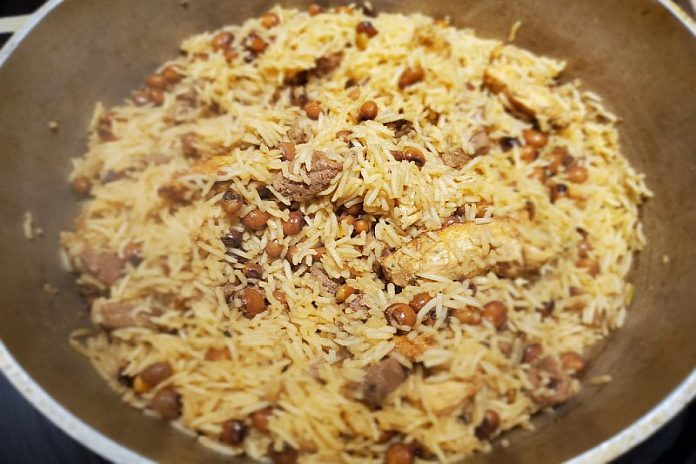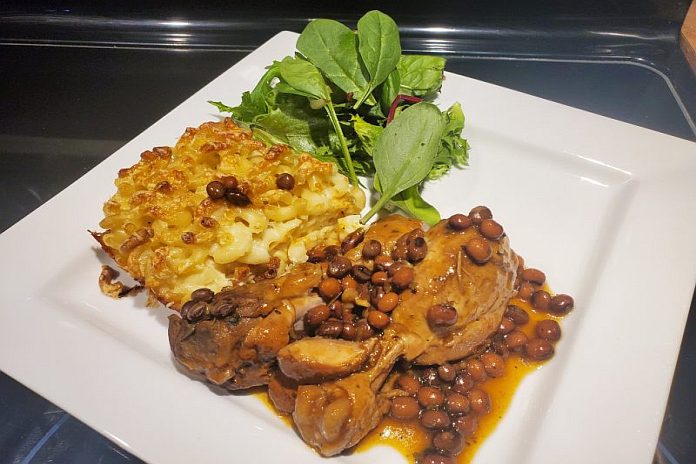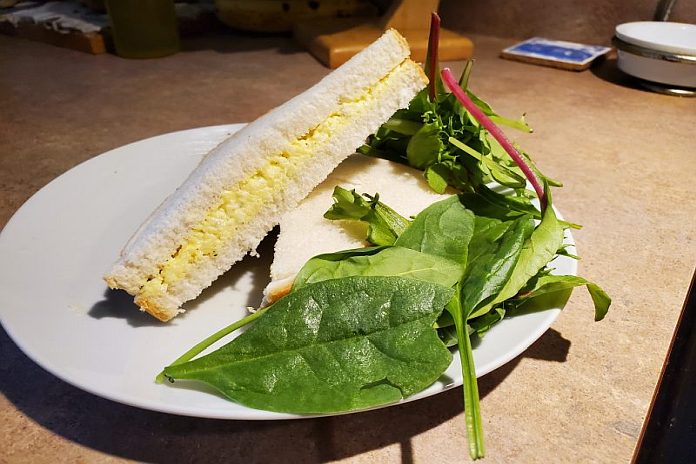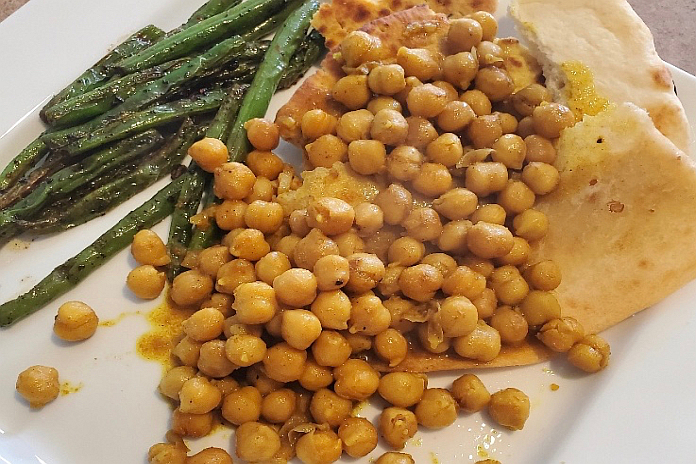Check out Global Voices’ special coverage of the global impact of COVID-19.
By Janine Mendes-Franco
Each Caribbean territory has its own individual customs, quirks, and cultural and social traditions. Naturally, this extends to cuisine.
Jamaica, for instance, is known for its ackee and saltfish or “jerk”-style meats; Barbados, its flying fish and “cou cou”; Trinidad and Tobago, its “pelau”, shark and bake or “doubles” — but it’s likely that Carribeans enjoy all types of food from every region. This is especially true for members of the diaspora, for whom Caribbean cooking brings a sumptuous whiff of home.
Amid the COVID-19 pandemic, one Trinidadian diaspora blogger decided to use the mandated isolation time to get creative in the kitchen. “Not wanting to go out unnecessarily,” Isle Chile writes, “we are trying to utilize the ingredients we have at home to make our meals.”
The result is a batch of easy-to-make, flavourful recipes, often accompanied by amusing anecdotes or Caribbean-centric musings, that may very well make time spent in isolation more pleasant. Here are a few highlights…
A favourite rice dish

This one-pot meal, involving browned rice, peas and your choice of meat, is hugely popular. Isle Chile explains:
I can’t think of a specific time when Trinis eat pelau. It works any time of year, at any festival or celebration […] It can be stored for the week in the fridge and the staler the pelau, the nicer it tastes, in my opinion.
As far as the method goes, she says, “pelau is all about cooking down the food together.” She said that a couple of tablespoons of coconut milk to ramp up the flavour, which may contribute to the fact that in her version, the rice is not as brown as in a typical “pelau” dish. However brown the “pelau”, however, the secret is to find “that sweet spot in the cooking time where [the] dish is not overly dry and not soggy”.
Ready-to-eat ‘roti’

In Trinidad, my family, like many, would accompany a roti with a red soft drink (pop), sweet drink or as we would call it (cutting off the last letter of the first word) a sofdrink or a sweedrink. Of course, I didn’t have one […] so I got creative and made a cranberry spritzer instead…Look, it red oui [yes], and I was happy to pretend.
“Roti” is so beloved in Trinidad and Tobago that there’s a saying, “You cannot please everyone. You are not roti.” In this vein, Isle Chile mused, “There is nothing more tasty, more special and no better way to say ‘I love you’, in my opinion than bringing me roti…”
‘Sunday lunch’

There was nothing like smelling Mummy’s pot on a Sunday and very often, when we were riding our bikes in the neighborhood, the wafting smells from everyone’s Mummy’s pot came together to make your belly growl as you played as you made sure you were close enough to home to hear your mother shout, ‘Come inside for lunch!’ Those were simpler, purely happy times and as I look in my fridge today to pull together my version of Sunday lunch in this time of pandemic, these memories will keep a smile on my face and the love of my birth land […] will flow from my heart, to my hands, to the spoon to the pot and to my family this afternoon. I think I will play a little soca [music] too, to transport me mentally to Trinidad and put me in a cooking mood.
Her step-by-step recipe covers both the meat and peas portions of the meal, as well as the macaroni pie, both of which, according to her son, she “throws down” in the kitchen. This is definitely a dish to be enjoyed.
Comforting cheese paste

Feeling for some comfort food, Isle Chile naturally turned to the “good old Trini cheese paste sandwich”:
Lately, I find comfort in a cheese paste sandwich on plain, soft, white bread. It is not the best nutrition and so many people look down on white bread but you know, life is short and when you need to comfort yourself while you live a life on lock down you should indulge.
Her recipe includes cheddar cheese, mustard, mayonnaise, black pepper, cayenne and parsley flakes, and her instructions end with a few words of wisdom:
Today I made a sandwich that was much more than a sandwich — it was a taste of the pleasure of simplicity. Life is going to get really simple in weeks to come. The spread of the virus will peak. Please stay at home. Make whatever your comfort food is and know that if we could all sacrifice our way of life for a few weeks for the greater good, we will help stop the spread of this virus. […] Find your cheese paste, my friends, because this too shall pass.
To view all the recipes, go here.
This article written by Janine Mendes-Franco originally appeared on Global Voices on April 7, 2020.





